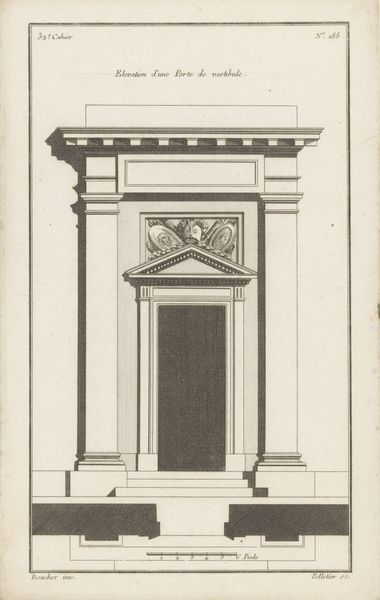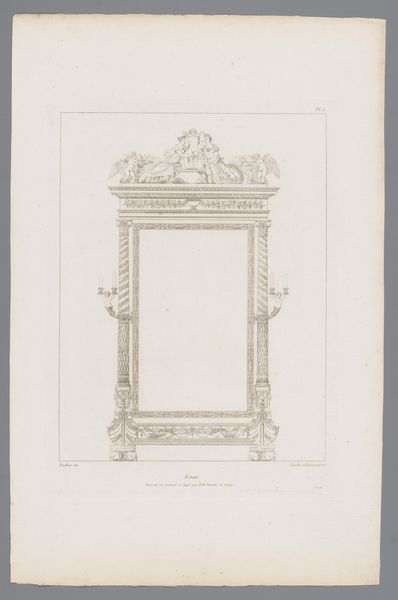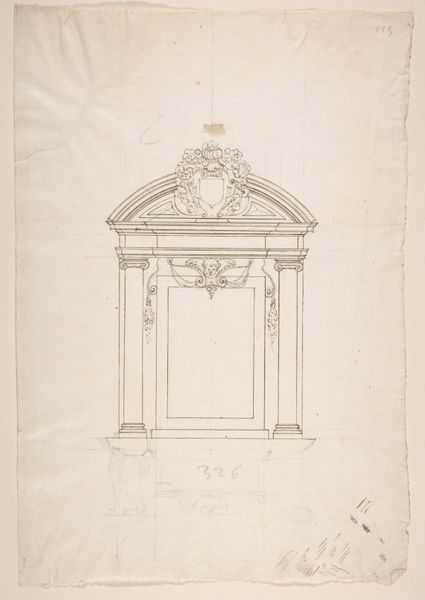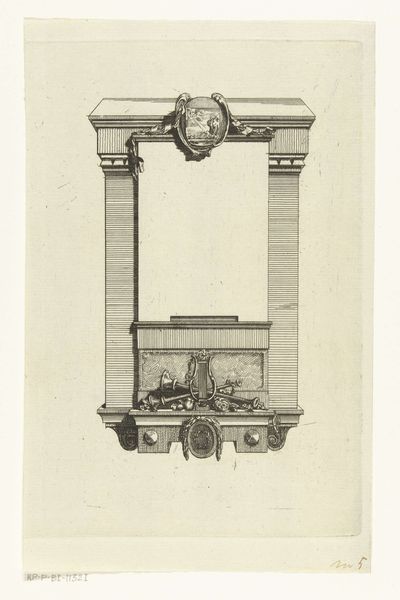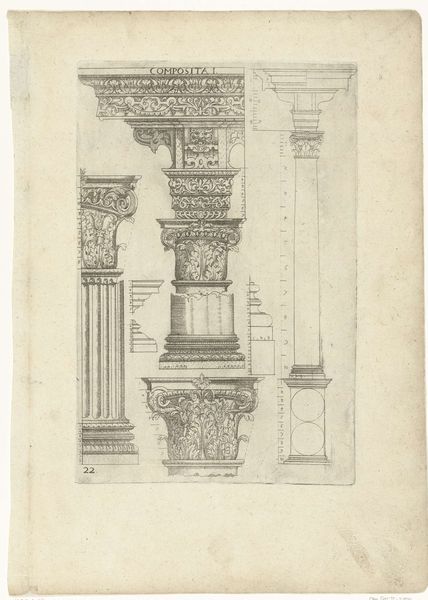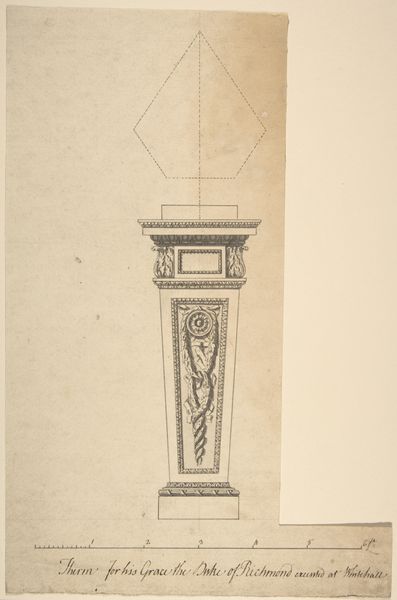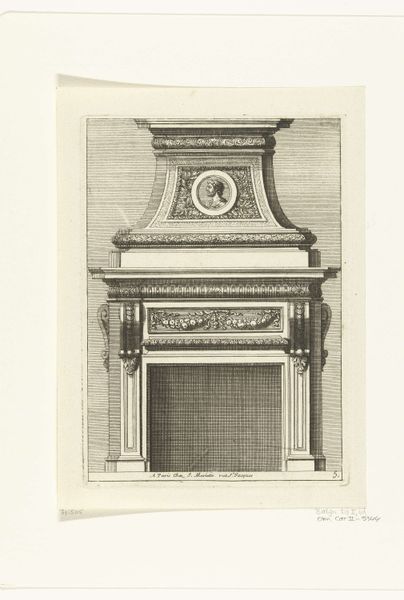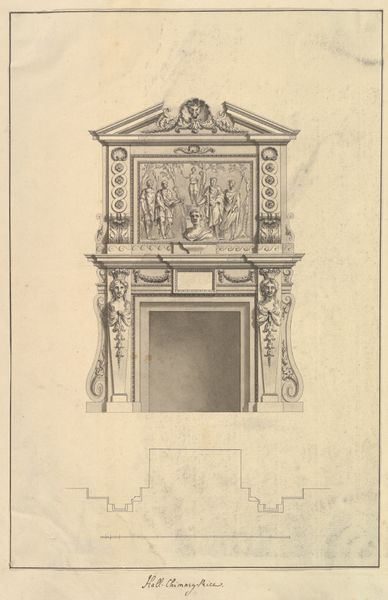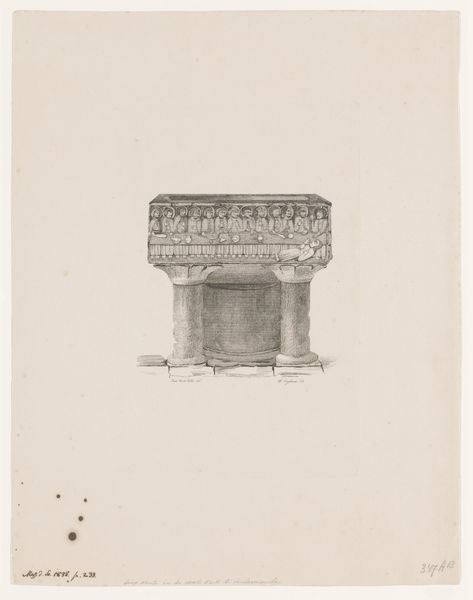
drawing, print, etching, engraving, architecture
#
drawing
# print
#
etching
#
etching
#
form
#
line
#
academic-art
#
engraving
#
architecture
Dimensions: height 229 mm, width 154 mm
Copyright: Rijks Museum: Open Domain
This architectural element with a niche was created by Edouard Lièvre, and it comes to us as a carefully rendered pencil drawing. The medium is significant here. Unlike the stone or plaster it represents, the drawing exists as a fleeting vision of architecture: a concept, not a solid reality. Look closely, and you will see the detail of the carvings, the depth implied by the shading. Lièvre was working at a time when industrialization was rapidly changing the built environment. Ornament, once carved laboriously by hand, was now easily stamped and mass-produced. By choosing to depict this element as a drawing, Lièvre reminds us of the skilled labor involved in creating such a structure. There is a reverence for the hand here, a recognition of the value of craft in an age of increasing mechanization. In considering the relationship between materials, making, and context, we can appreciate the full depth of meaning in this drawing, challenging traditional distinctions between the fine arts and craft.
Comments
No comments
Be the first to comment and join the conversation on the ultimate creative platform.
